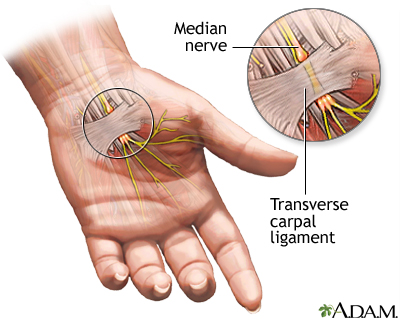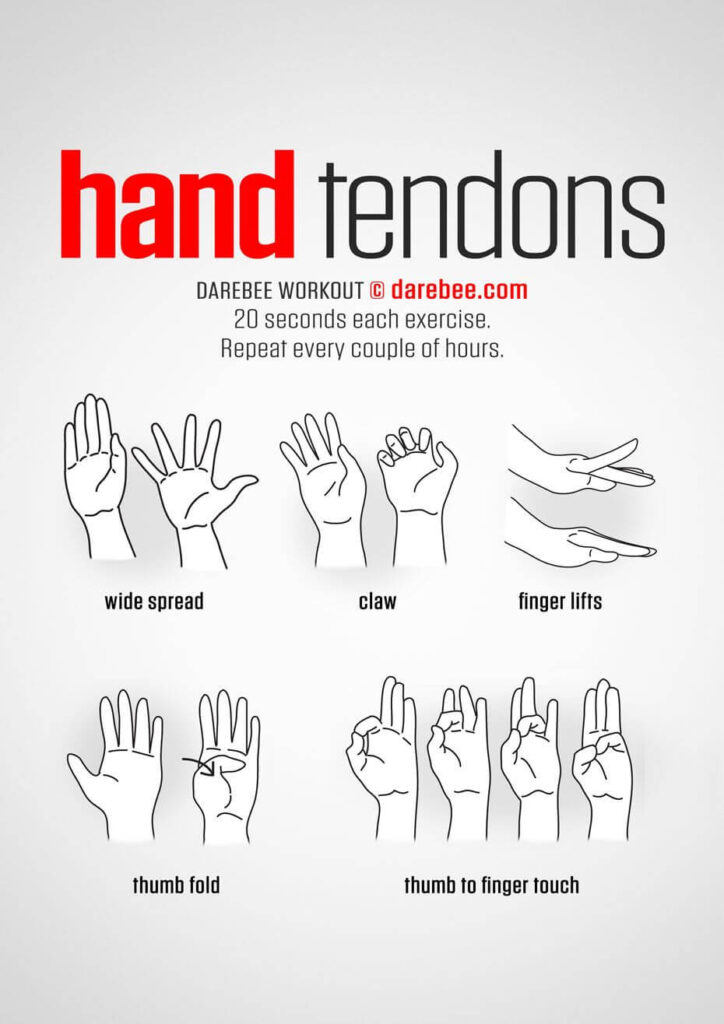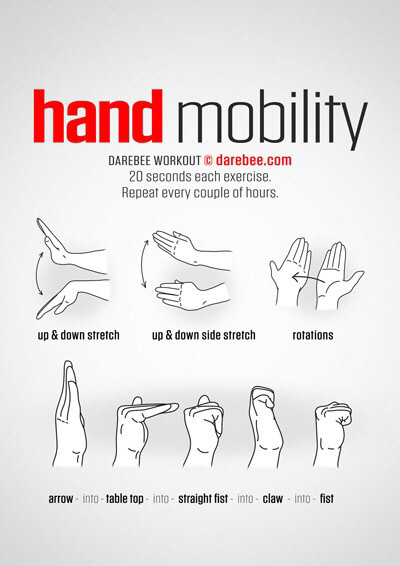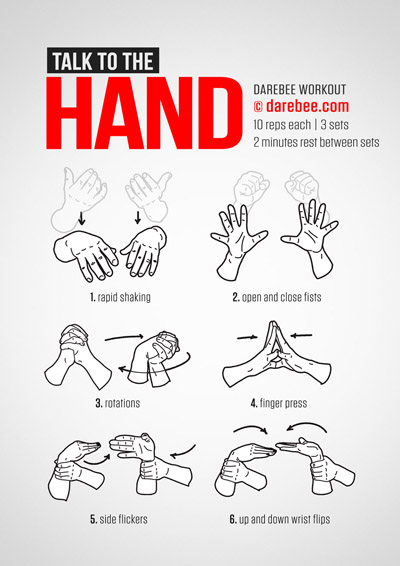Disclosure: This article may contain affiliate links. When you click these links, I may earn a small commission at no cost to you. As an Amazon Associate I earn from qualifying purchases at no cost to you. See full policy here
So…Let’s say you are sitting at your desk or on your couch typing away on your computer when you begin to notice that familiar achy pain in your hand(s) and/or your wrist(s). You start shaking out your hands to help ease the pain, but it doesn’t really help. Or you keep waking up at night with hand and wrist pain. Maybe you have noticed difficulty gripping items, opening jar lids or medicine bottles. Are you experiencing “finger clumsiness” dropping things frequently? If any of these scenarios sound familiar, then you may be exhibiting signs of Carpal Tunnel Syndrome. In this post you will discover All You Need To Know About Carpal Tunnel Syndrome.
Overview
Definition Of Carpal Tunnel Syndrome
Carpal Tunnel Syndrome, also called Median Nerve Compression, occurs when the median nerve is compressed within the carpal tunnel. This compression leads to various symptoms which will be highlighted later in this post. The carpal tunnel is a narrow passageway located on the palmar side of your wrist surrounded by bones and ligaments. The median nerve resides within the carpal tunnel and provides sensation to the palm side of the thumb and all fingers minus the little finger. It also provides nerve signals to move the muscles around the base of the thumb.

How Often Does It Occur?
According to the University Of Maryland Medical Center there is evidence that about 2% of all men and 3% of all women could be diagnosed with Carpal Tunnel sometime in their lives. Many times there is no single cause for developing Carpal Tunnel Syndrome. Often it is a combination of risk factors and environment that contributes to the development of the condition. So, what are the risk factors?
Risk Factors For Developing Carpal Tunnel Syndrome
1. Wrist Injuries And People With Small Wrists
- A wrist injury such as a fracture or dislocation or arthritis may cause deformities of the small bones of the wrist. This may alter the space within the carpal tunnel putting pressure on the median nerve.
- Anyone who has a small wrist usually has a small carpal tunnel which makes them more prone to carpal tunnel syndrome.
2. Females
- Studies show that women are more susceptible for developing symptoms of carpal tunnel syndrome.
3. Nerve Damaging Conditions
- Chronic Illnesses such as Diabetes, Multiple Sclerosis, Guillain-Barre Syndrome, Lupus, Parkinson, and Cancer are some that increase the risk of nerve damage including damage to the median nerve.
4. Inflammatory Conditions
- Rheumatoid Arthritis, Psoriatic Arthritis, Gout, and other conditions that have an inflammatory component can affect the lining around the tendons in your wrist. This can increase the pressure on the median nerve.
5. Fluid Retention
- Any condition that causes fluid retention may increase the pressure within the carpal tunnel irritating the median nerve. Some of these conditions include pregnancy, menopause, or various medications.
6. Workplace Environment
- Anyone whose job requires prolonged repetitive wrist motions for at least several hours per day. Occupations such as hairdressers, assembly line workers, sewers, knitters, chefs, bakers, cashiers, and those who type on digital devices are more likely to develop carpal tunnel symptoms.
If you have identified yourself with one or more of these risk factors, you may be wondering how do you know if you have Carpal Tunnel Syndrome.
What Are The Symptoms Of Carpal Tunnel Syndrome?
1. Numbness and Tingling in the wrist, hand and fingers except for the little finger.
2. Decreased Strength in the hand and fingers making it difficult to grip and hold onto objects, type, and use digital devices.
3. Burning Sensation in the hand and fingers minus the little finger radiating up the forearm.
4. Wrist and Hand Pain worse at night and early morning.
* This may be due to holding your hands and wrists in a curled position while you sleep which can lead to increased inflammation.
5. Fingers feel but don’t look swollen
6. Cold hands but warm forearms
What are some ways to minimize the likelihood of developing Carpal Tunnel Syndrome?
Strategies To Prevent Carpal Tunnel Syndrome
1. Workplace Modifications
Posture
- Use correct posture in sitting and/or standing. See Related Post.
- Make sure that your desk and chair are set up correctly.
- When typing keep your hands and wrists in a straight neutral position with elbows close to your body and your forearms parallel to the floor.
Keyboard
- Position: Place the keyboard so it sits directly in front of your computer leaving a four to six inch space between the keyboard’s edge and your desk. This allows a place for your wrists to rest while you type. You may want to consider padded palm and wrist rests.
- Types: Ergonomic Keyboards such as the Perixx Wireless Split Keyboard, the Microsoft Sculpt Keyboard or the Logitech Wireless Wave Keyboard and Mouse combo. These will help to keep your wrists in a neutral position. Mechanical Keyboards including the Razer BlackWidow Elite Keyboard or the Kinesis Freestyle Pro Quiet Keyboard use switches that immediately register a keypress reducing the resistance on the fingers.
Mouse
- Position: Place the mouse within easy reach on the same surface as the keyboard. Avoid stretching to reach the mouse as this could cause muscle strain and fatigue. When using the mouse keep your wrists straight, arms close to your side, and hands slightly below your elbows.
- Types: Ergonomically designed ones such as the Anker Wireless Vertical Mouse, the Logitech Wireless Trackball Mouse encourage healthy wrist and hand positions.
Desk
- Position: Proper desk height is critical for maintaining your comfort throughout the day. To see how to set up your desk so that it is ergonomically correct see Related Post: Best Practices For Using A Standing Desk. These tips will also apply to sit alone desks.
- Types: Sit To Stand Desks or Convertors that sit on top of a regular desk allow you to change from sitting to standing positions throughout the day. Thinking about a standing desk, check out one from StandDesk,Inc. here.
Get Your Free Workstation Checklist Full Of More Awesome Tips Below:
2. Exercise
Hand And Wrist Stretching Exercises
1. Basic Wrist Stretches
- Sit down at a table, counter, desk, etc. with your forearm resting on the surface and let your wrist hang over the edge.
- Start with your hand in a neutral straight position palm facing up.
- Bend your hand towards you so that your fingers point up toward the ceiling and hold for 5 seconds. Repeat 5 times.
- Return your hand to a straight neutral position.
- Bend your hand away from you so your fingers point down towards the floor and hold for 5 seconds. Repeat 5 times.
2. Basic Hand Stretches
- Fist To Stop Sign: Make a fist and fan your fingers out. Repeat 5 Times.
- Thumb to Finger: One at a time, touch the tip of each finger to the tip of your thumb so it makes an O shape. Repeat 5 times.
3. Hand Mobility Activities


Hand And Wrist Strengthening Exercises
1. Desk Press
- While seated place your palms face up with your elbows bent at 90 degrees under a desk or table.
- Press palms upwards against the bottom of the desk or table and hold for 5 seconds. Repeat 5 times.
2. Tennis Ball Squeeze
- Squeeze a tennis ball or stress ball firmly, but painlessly for 5 to 10 seconds. Repeat 5 times.
3. Thumb Work
- Push/Pull
- Make a fist and point your thumb up as if you were giving a “thumbs up” sign.
- Create resistance by tightening your thumb muscles.
- With your other hand gently pull your thumb back towards you and hold 5 to 10 seconds. Repeat 5 times.
- Same as above, but this time push your thumb forward away from you and hold 5 to 10 seconds. Repeat 5 times.
4. Theraputty
- To perform the following exercises you will need some theraputty . Do each exercise 3-5 times for 1-2 times a day.

5. Wrist Strengthening by Darebee

As a licensed practicing Physical Therapist, I would highly recommend these exercises to stretch and strengthen your hands and wrists.
3. Try A Softer Touch
- Lessen your grip as you perform activities throughout the day.
- Use gentle keystrokes when typing and moving your mouse.
- Hold and carry items with less pressure on your fingers and hands.
4. Switch It Up
- Try to avoid performing the same hand and wrist motions over and over again.
- If you always use one hand to perform most of your daily tasks, try using the other hand occasionally.
5. Stay Warm
- Sounds easy, but keeping your wrists and hands warm decreases pain and stiffness.
- Wearing gloves with finger holes like these Vive Arthritic Gloves will definitely help you during the day and even at night.
6. Take A Break
- Step away from your work to bend, stretch, and/or shake out your wrists, hands, and fingers. A five to ten minute break every two hours is ideal.
Taking preventative measures may help but does not guarantee that you won’t develop Carpal Tunnel Syndrome especially if you are in a high risk category.
How Is A Diagnosis Of Carpal Tunnel Syndrome Made?
There are several methods that are used to confirm a diagnosis of Carpal Tunnel Syndrome. These include a Physical Exam, an X-Ray, an Ultrasound, a MRI Scan, an Electromyogram, and a Nerve Conduction Velocity Scan.
Physical Exam
- Involves an intake questionnaire which includes a full present and past medical history and a description of your symptoms and when they began.
- Tests for ROM (Elbow, Forearm, Wrist and Hand), Strength (Grip and Pinch), and Sensation (Light Touch, Sharp/Dull) are performed on both sides. The results are compared between the involved and uninvolved side.
- A series of Nerve Tapping Tests where the Median and Ulnar nerves innervate are done to see if they reproduce or provoke symptoms.
X-Ray
- Provides images of dense structures such as bone.
- Used to rule out other causes for your symptoms such as arthritis, ligament and/or soft tissue injuries, or fractures.
Ultrasound
- Uses high frequency sound waves to help create pictures of bone and tissue.
- This will show if the Median Nerve is showing signs of compression.
MRI (Magnetic Resonance Image) Scan
- Utilizes a large magnet and radio waves to provide images of the body organs and soft tissue.
- It helps the MD determine if there are problems with the nerve itself such as scarring from the injury or if a cyst or tumor is present.
Electromyogram
- An Electromyogram is a test that measures the electrical activity of nerves and muscles. It consists of Two Parts:
- 1. Nerve Conduction Studies where electrodes are taped to the skin and a small brief electrical impulse is delivered. This test measures the ability of nerves to send signals to the innervated muscles.
- Needle Electrode Examination in which involves inserting a thin gauge needle that acts like a microphone into a muscle. This exam measures the electrical activity inside the muscle.
A physician may choose to use all or several of the above methods to make a diagnosis of Carpal Tunnel Syndrome. Once a diagnosis has been made, there are several common treatment options available. These are: Home Remedies, Exercises, Over-The-Counter Medications, Corticosteroid Injections and Surgery.
Treatments For Carpal Tunnel Syndrome
Home Remedies
1. Products:
1. Carpal Tunnel Brace
- This ergonomic hand splint will give your injured wrist the support it needs to keep it in a neutral position during the day and/or at night as you rest.
- The ComfyBrace hand splint with it’s wrist support strap is designed to fit the right or left hand. The material is breathable and does not hold any moisture.
2. Copper Lined Wrist Support
- COMFORTABLE NEOPRENE COPPER LINED MATERIAL: A high quality blend of 65% neoprene, 35% nylon and the only support of its kind to be COPPER LINED. Universally sized with a strap system to tailor support and optimize results for all day wear, the wrist strap can be used for both left and right wrists. Do not use if you have a neoprene or nylon allergy. It is recommended to initially wear for no more than 20 minutes gradually increasing wear time as tolerated.
- DOCTOR WRITTEN HANDBOOK INCLUDED: Want to know more about your condition, treatment options available, our best tips, and exercises that can optimize the strength and function of your wrist to prevent injury as well as aid recovery? Read the handbook for your complete guide.
3. Keyboard Wrist Rest Pad, Mouse Wrist Cushion Support
- Large mouse pad size 6.3*3*1 inch and 17*3.4*1 inch keyboard wrist pad fits most computers or notebooks or mouse, improves hand and wrist posture, helps to avoid joint and wrist pain and relieves elbow and shoulder stress for long hours of computer use.
- A Non-Skid rubber base provides a heavy grip which prevents sliding or unwanted movement of keyboard and mouse pads.
4. Carpal Tunnel Pain Relief Roll-On
- THE CARPAL COMFORT ROLL-ON PAIN RELIEVER GEL provides deep relief for mild to moderate symptoms of Carpal Tunnel Syndrome. It contains natural ingredients( boswellia, arnica, and yerba mate) and medical ingredients(lidocaine & benzyl-alcohol). It also works for hand & wrist pain caused by arthritis, inflammation, tendonitis and muscle aches. I have also used it to relieve my “tennis elbow” pain flare-ups.
- APPLYING CARPAL COMFORT IS EASY & MESS-FREE! Simply roll on to the palm side of your wrist, hand and fingers up to 4 times daily. It dries fast, won’t stain, is Paraben free & has a fresh mint scent.
- DOCTOR DESIGNED & RECOMMENDED, RESEARCH BASED & MADE IN THE USA! Developed by Dr. Daniel Penello. Certified by the American Board of Orthopaedic Surgery and Member of the American Society for Surgery of the Hand. If your symptoms persist, please consult a Doctor as the condition may be more advanced in severity.
5. Wrist Ice Pack Wrap/Hand Support Brace with Reusable Gel Pack – Hot & Cold Therapy Relief
- FREEZE THE GEL PACK OR MICROWAVE IT: What makes your injured wrist feel better, heat or ice? The gel pack wrist wrap gives you the opportunity to apply both hot and cold therapy in your pained hand. All you have to do is freeze or microwave the gel pack.
- USE THE TWO PIECES TOGETHER OR SEPARATELY: The compression wrist wrap and the cooling gel ice pack are two separate pieces that you wear together for the best and fastest results! However, you can also use the two pieces separately. The wrist wrap can work as a support brace on its own. As for the gel pack, you can freeze it or microwave it and use on your wrist and hand or any other area of your body you want.
- SAFETY INFORMATION: – NEVER apply gel pack directly on skin after being heated or frozen, as excessive heat or cold can lead to burns. Always insert into the wrap’s pocket or use a thin sock for protection.
2. Exercise: Median Nerve Gliding Exercises

Source: SchreiberMD.com
3. Over-The-Counter Medications:
1. NonSteroidal Anti-inflammatory Drugs (NSAIDS)
- Aspirin (Bayer, St. Joseph): Reduces Pain Moderately, Reduces Fever, Reduces Inflammation
- Ibuprofen (Advil, Motrin, Nuprin): Reduces Pain, Reduces Fever, Reduces Inflammation
- Naproxen Sodium, Naproxen (Aleve): Reduces Pain, Reduces Fever, Reduces Inflammation
2. Non-Aspirin Pain Reliever
- Acetaminophen (Tylenol): Reduces Pain Moderately, Reduces Fever
Corticosteroid Injections
- Injecting corticosteroids near the carpal tunnel reduce swelling in the connective tissue which relieves the pressure on the median nerve.
- After having a corticosteroid injection, it is recommended that you rest the affected area for 24 hours and avoid strenuous activity for the next several days. Always Follow Your Doctor’s Directions!
- Cortisone shots may occasionally cause a flare up of symptoms for up to 48 hours after the injection. After that, pain and inflammation should decrease for at least several months.
Surgery
Severe cases of Carpal Tunnel may require surgery as the only treatment option left to relieve your symptoms. Your doctor may choose either the Endoscopic technique or the Open Surgical technique.
Endoscopic Technique
- Your surgeon uses a telescope like device with a tiny camera attached to it (endoscope) to see inside the carpal tunnel. He or she then cuts through the ligament with one or two small incisions to relieve pressure on the median nerve.
- This technique usually results in less pain post-op.
Open Surgical Technique
- Your surgeon makes an incision in the palm of your hand over the carpal tunnel and cuts through the ligament to free the nerve.
- During the healing process post surgery the ligament tissues gradually grow back together allowing more space for the nerve.
- The internal healing process typically takes several months, but the skin itself usually heals in a few weeks.
With both of these techniques your doctor will give you post-op instructions. Always follow these instructions. The most common post-op surgical recommendations can be found below:
Post-Op Surgical Recommendations
1. Immediately after surgery keep your hand elevated above your head and move your fingers to decrease swelling and stiffness.
2. If you experience new or worsening numbness/tingling, pain, stiffness of fingers, redness around the wound, you should contact your surgeon’s office.
3. Avoid or limit repetitive activities like typing for about a week to keep swelling and discomfort minimal.
3. Limit forceful hand motions or extreme wrist positions for several weeks. Wearing a brace or splint may help with this.
4. Driving, self-care, light lifting and gripping activities may be allowed as long as they do not cause any significant discomfort.
Keep in mind that these are only recommendations. Remember, Always Follow Your Surgeon’s Specific Post-Op Directions.
Summary
I hope this post has given you an in-depth understanding of what Carpal Tunnel Syndrome is, the symptoms of it, ways to prevent it, how it’s diagnosed, and how to treat it.
Please Share and Like if you found this post useful and want to help other’s with Carpal Tunnel.
Sources: www.webmd.com, www.mayoclinic.com.
Quick Disclaimer:
All content in this post is for informational purposes only. It is not intended to be diagnostic nor as a substitute for consultation, examination, and treatment by a qualified health professional. Always consult with your physician before beginning an exercise program





very relative article, I have a small wrist and sometimes when I work on designs and in front of pc for a few hours I feel my hand getting tired and hard to move. I have a stress ball at work and it helps.
Thank you for the positive feedback. I am glad that the stress ball helps!
This is a really good tip especially to those fresh to the blogosphere. Short but very precise information… Thanks for sharing this one. A must read article!
Thank you for the kind and positive feedback!